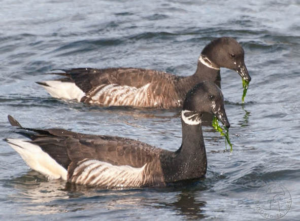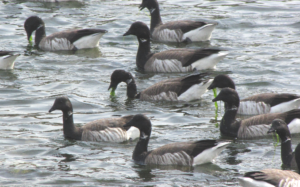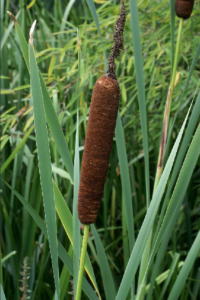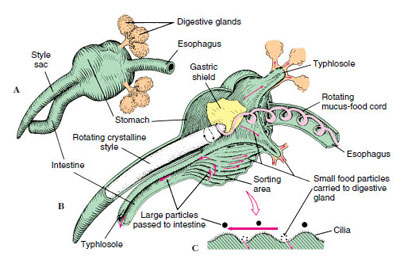
Barnegat Bay Environment
Submerged Aquatic Vegetation (SAV) Aquatic grasses and macro-algae
Eelgrass Zostera marina
Eelgrass is the dominant seagrass species in Barnegat Bay, forming dense beds (particularly on sandflats) along the backside of the barrier island system
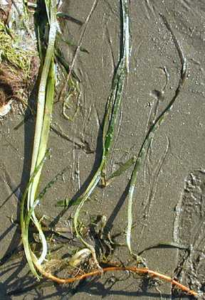
 Zostera marina is a subtidal marine flowering vascular plant with all stages of the life cycle occurring underwater.
Zostera marina is a subtidal marine flowering vascular plant with all stages of the life cycle occurring underwater.
Sexual reproduction takes place in early summer, when female flowers are fertilized by drifting pollen and develop into seed-bearing shoots.
The shoots eventually break off, float to the surface and release their seeds
Asexual reproduction takes place when the rhizome grows and winter buds called turions form.
Eelgrass provides a number of important ecosystem functions:
– foraging areas and shelter to young fish and invertebrates
– spawning surface for fish and invertebrates
– food for migrating waterfowl
– tapping sediment and stabilizing the substrate
– reducing the force of wave energy
– helping to reduce costal erosion.
Juveniles blue crabs and molting adults hide from predators among eelgrass beds.
Widgeon grass Ruppia maritima
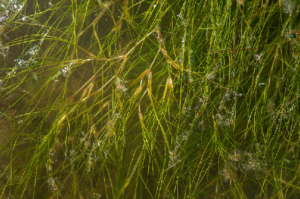 The grass grows in two forms: an upright, branched form with flowers that stand several feet tall, and a short, creeping form with leaves at the base of the plant.
The grass grows in two forms: an upright, branched form with flowers that stand several feet tall, and a short, creeping form with leaves at the base of the plant.
In late summer, long stalks with clusters of individual black, pointed seeds grow from the base of the leaves.
Widgeon grass has an extensive root system with creeping rhizomes that lack tubers
Common Cattail Typha latifolia
Sea lettuce Ulva lactuca Macroalgae
 Sea Lettice is a thin flat green algae.
Sea Lettice is a thin flat green algae.
The margin is somewhat ruffled and often torn. It may reach 7 inches or more in length, though generally much less, and up to 12 inches across.
The membrane is two cells thick, soft and translucent, and grows attached to rocks or other algae by a small disc-shaped holdfast.
A holdfast is a rootlike structure used by some plants and algae to firmly affix themselves to substrates such as rock
Horned pondweed Zannichellia palustris
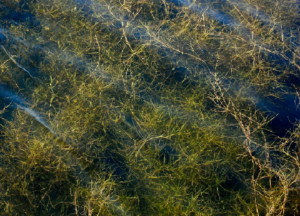 Horned pondweed is a bay grass with long, thread-like leaves and distinctive horned seeds in spring.
Horned pondweed is a bay grass with long, thread-like leaves and distinctive horned seeds in spring.
It grows in fresh and medium-salinity tidal waters of Barnegat Bay and its tributaries.
Horned pondweed has thin rhizomes and short, tendril-like roots.
It grows in two forms: an upright form with free-floating branches, and a creeping form with roots that anchor the plant to the bottom.
Migratory waterfowl feed on the plant and its seeds.
Sago pondweed Potamogeton pectinatus
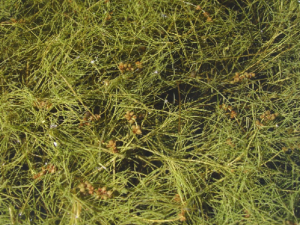 Sago pondweed, also called Fennel-leaved pondweed is a bay grass with bushy clusters of thread-like leaves that grow alternately along slender, branching stems.
Sago pondweed, also called Fennel-leaved pondweed is a bay grass with bushy clusters of thread-like leaves that grow alternately along slender, branching stems.
Leaves taper to a point and grow to about 4 inches long. Bead-like flowers grow along a slender spike in early summer
Sago pondweed may have a whitish pointed tip, or bayonet, in the sheath at the base of the leaves. Its long, straight roots have thin rhizomes.
Migratory waterfowl feed on the entire plant, particularly its nutrient-rich seeds and tuber
